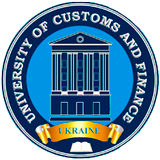Peer-review process
Peer-review procedure in a scientific journal “Systems and Technologies”
Scholarly manuscripts are subject to peer review (expert assessment) to maintain the journal’s high scientific-theoretical level and select the most valuable and relevant research papers.
The journal “Systems and Technologies” adheres to double-blinded peer review: neither the authors’ nor peer reviewers’ identities are shared with each other. Submitted research papers are subject to initial examination for compliance with design requirements.
The chief editor, or deputy chief editor, conducts an initial expert assessment of a scholarly article.
Editors select a peer reviewer with the relevant expertise (specialty) for a particular article from the editorial board members.
Peer reviewers should be renowned specialists in the area the article is devoted to and have specific publications (it is desirable for the last 5 years).
As a result of article assessment, a peer reviewer concludes, as follows:
- the article is recommended for publication;
- the article is recommended for publication after improvement by the author given the peer reviewer’s comments;
- the article is rejected.
A review should justify why the peer reviewer recommends the article’s publication after its improvement considering comments or rejects it.
Editors recommend using a standard review form available on the journal’s website.
In reviewing scientific articles, peer reviewers should take the following measures:
- pay special attention to the relevance of the scientific problem under consideration;
- evaluate the correlation of the author’s conclusions with available scientific concepts;
- evaluate the authors’ compliance with the rules of scientific ethics and the correctness of references to literary sources.
Scientific articles can be subject to additional peer review due to:
- an insufficiently high level of primary expert opinion;
- acute disputability of the provisions expressed in the scientific article.
 ISSN
ISSN 




